Want to start archery, but not sure how? Andrew Smith breaks down the way archery is organised in the UK and the types of archery that are available, as well as a guide to what it can cost to take part
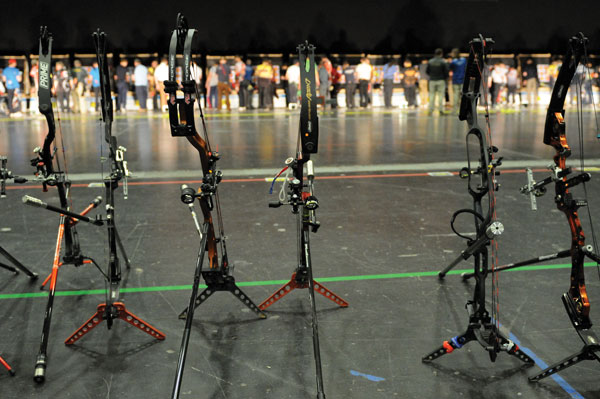
They might look similar, but each of these bows is set up to meet its archer’s exact specifications
Archery is an ideal sport for everyone, because just about anyone can participate and there are very few reasons why somebody cannot become an archer. Variety is the order of the day, and there are a number of different archery disciplines and societies, so there should be something to take your fancy. All societies have competition structures, but if competing’s not your thing archery is also a great social sport, a great way to relax, and caters for all interests from the modern and latest, to the old and traditional.
Fitness, age or a disability is no barrier either. With Great Britain topping the archery medal table at the Rio Paralympics, the excuses for not shooting are few and far between.
So, assuming you are reading this because you have been inspired by what you have seen in Rio and realised that archery is a great sport for everyone regardless of age or ability, how do you get started? The simple answer is to find a club.Clubs are the bedrock of archery in the UK and the type of archery they do will depend on the societies they choose to be associated with. Usually club membership fees will also include annual membership to one or more of the societies (though I’ll go into what these are later in the article). To find a club most suited to your interest, the best place to start is the society website. In the UK you will be surprised at how close you are to an archery club – many are just a few minutes’ drive away.
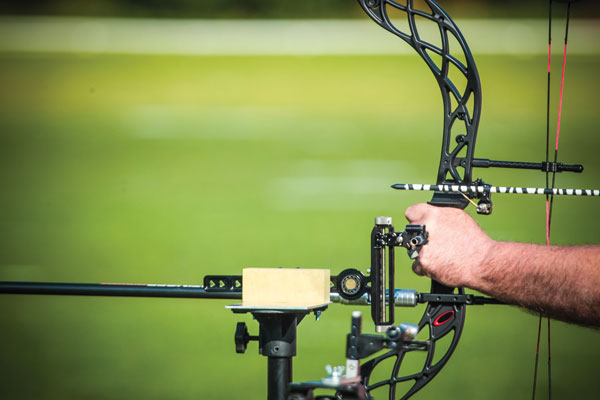
The British Blind Sport Society can help visually impaired archers with tactile sights
However, while that sounds easy, to be honest getting started is not always as simple as it should be. But don’t be discouraged – primarily it is all down to a society’s insurance rules and safety. In most cases you just cannot turn up at a club as a first-time archer and start to shoot. You have to have had some formal instruction, and this is usually done in the form of a structured group beginners’ course. These are run by clubs at certain times of the year, although some clubs run regular smaller group courses depending on demand. If you do find yourself struggling to find a course don’t despair, as some clubs also have arrangements with their local archery pro shop and they will run one-to-one and group lessons to reduce the waiting time.
In the UK you have the opportunity to shoot many disciplines: target or Olympic archery, field archery, clout archery, flight archery, and historical archery. The type of equipment you can shoot is also wide ranging, from the complexities of a compound and Olympic recurve bow fitted with all the latest gear, to the simplicity of an English longbow. You don’t have to choose either, you can shoot all or just a few types if you want to, and many archers have more than one bow.
In the UK we do have a national governing body that represents archery in the UK; however, the landscape is complicated because other organisations represent specific archery disciplines. There is also some crossover and duplication between organisations, so later I will briefly cover each discipline, explain who runs this section of the sport, and offer an equipment price guide to help get you up and running.
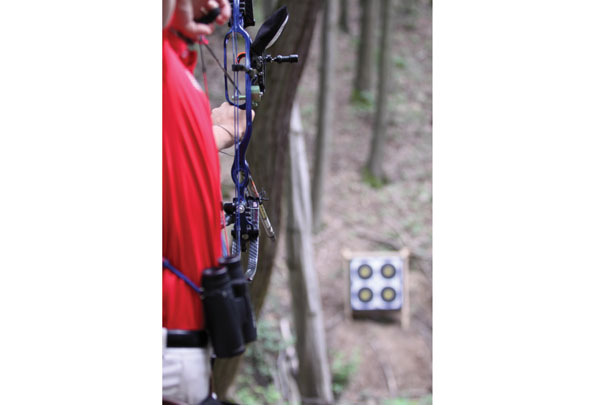
Field archery involves shooting a variety of targets around a (usually) wooded course
The costs I’ve mentioned are based on new prices, and include all the basic equipment required for each bow discipline. With care and the right knowledge there is a thriving second-hand market to keep costs down, and some clubs will allow you to use or hire club equipment to give you time after the beginners’ course to decide if archery is for you. As a rough guide, archery is probably one of the cheaper equipment-based sports you can participate in, and even modest equipment in the right hands produces medal-winning performances.
When it comes to equipment it is important to understand that we are all different and we require the archery equipment that’s most suited to us – there is no one size fits all if you want to do more than just plonk arrows for fun. Archers soon learn that if a bow that is too hard to draw back or comes with mismatched arrows, it will not be as accurate as equipment that is fitted to you. In the long run the wrong equipment will make archery less enjoyable, more expensive, and your progress will be slower.
As you will find out, there is a vast array of archery equipment available to meet all budgets, so don’t think that you have to buy the most expensive to be the best. Most archery shops are run by experienced archers and they can help you get what is right for you and within your budget.
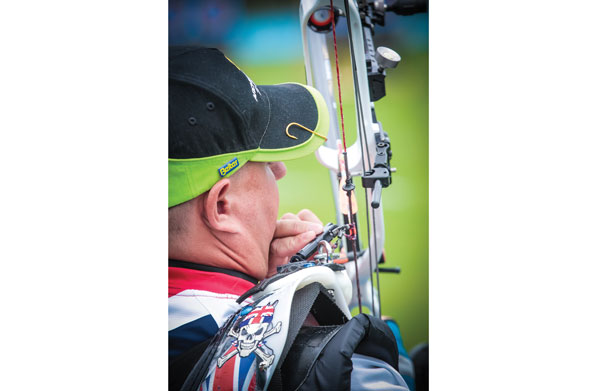
There is a range of assistive devices available that make archery suitable for all sorts of people
Main archery disciplines
Target Archery: this is by far the largest discipline, with some 40,000 registered archers in the UK. It’s usually shot on a flat grass field in the summer and sports halls in the winter. You shoot a set number of arrows at a single or multiple known distances, shooting at what most would recognise as a traditional-looking target face.
Recognised bow types: compound, Olympic recurve, barebow (Olympic recurve but
with most of the accessories removed),
English Longbow.
Field Archery: This is the second largest form of the sport, with around 15,000 archers. While it was initially developed to simulate hunting in the closed season, it’s worth a reminder that any form of hunting with a bow and arrow is completely banned in the UK. Usually a field course is set up in woods, rolling hills and fields. You shoot at either paper faces or plastic 3D animals. The distances are either known or unknown and, like in golf, you move from one target to another throughout the shoot.
The recognised bow types for field are vast, so here are the popular ones: compound, Olympic recurve, barebow, traditional hunting bows, American flat bows, horse bows and the English longbow. Some societies may also
allow crossbows.
Clout: Clout was introduced to simulate the archers on the battlefield where the bow and arrow was used as a ballistic weapon. In this discipline you shoot at a flag in the ground, and for women this is 140 yards away and for men it’s 180 yards away. Depending on the club organising the shoot, most of the bow types mentioned above can be used.
Flight: This form of our sport it is all about shooting an arrow the furthest distance, and to make it fair different types of bow do not compete with each other as some will shoot further than others. Again, all the bow types already mentioned above are used, as well as some very special one-off bows.
Roving Marks and distance shooting: A traditional form of shooting, mostly shot with traditional equipment such as longbows. The idea is to roam over private land (with permission) pick a target like a tree stump and see who can get closest. Distance shooting is similar to flight archery, but using traditional equipment.
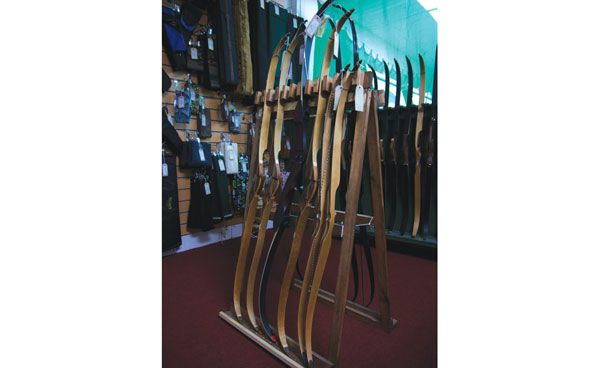
There is a thriving traditional archery scene in the UK, but just check which society recognises which bow types in competition as some have limitations
Main Organisations and Governing bodies
Archery GB (Grand National Archery Society)
The largest governing body with the most central funding from Sport UK, responsible for selecting our teams for international competitions such as the Olympics, Paralympics, World Championships and World Cups.
The most popular discipline is target archery, but clubs and counties also run field archery and clout competitions.
Equipment costs for shooting at an Archery GB target club – including arrows and all the basic equipment to get up and running – Olympic recurve £250-£450; unlimited compound £350-£600; barebow £200-£300, English longbow £350-£500.
Adult annual membership: direct member £50, member via a club £41 (2016).
NFAS (National Field Archery Society)
This society promotes field archery. In the UK there are many clubs all over the country and the society recognises most bow types, including crossbows. In addition to the costs mentioned above, other bow disciplines recognised and shot within NFAS include: field bow £250, horse bow £300 and American flat bow £250.
Adult annual membership £20.
English Field Archery Society and International Field Archery Association
Like the NFAS, the EFAA is a field archery society that promotes field archery both in the UK and internationally. Equipment costs are the same as mentioned above.
Adult annual membership £20.
The following societies can further enhance your enjoyment of archery, and for particular disciplines can offer more in-depth support.
The BLBS encourages the use of the traditional recreational longbows for two-way target and clout shooting, and has some 2,000 members in the UK.
Adult annual membership £7.
The main activity practiced by this society is shooting at the marks, but other traditional forms of archery are also encouraged; speed-shooting; distance (flight) shooting; the King’s Target; the Wand.
The society organises about nine events a year. Adult annual membership £8.
The BBSS helps blind and visually impaired archers enjoy their sport; they have come up with some ingenious ways to assist aiming and run and promote domestic and
international competition.
British Wheelchair Archery Association
The British Wheelchair Archery Association has been formed to help promote the sport of para-archery and assist with all aspects of the sport from grassroots information to elite-level training. New archers are encouraged to join a local archery club to receive coaching and gain experience. Once the archer has their own equipment they are encouraged to attend archery training weekends at Stoke Mandeville.
Hopefully from that you can see that there really is something for everyone. Being an equipment-based sport there are upfront costs after your beginners’ course to get you up and running but, with planning, these can be kept to a minimum. All that’s left to do is find your local club and start making the most of what archery has to offer!
This article originally appeared in the issue 111 of Bow International magazine. For more great content like this, subscribe today at our secure online store: www.myfavouritemagazines.co.uk


I am a Recreation Therapist in Phoenix Arizona and I have two Visually Impaired Veterans who are interested in archery. What sort of equipment is used for Visually Impaired Archers?